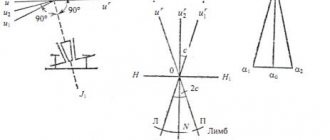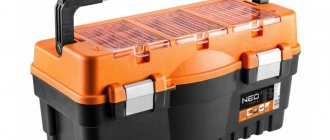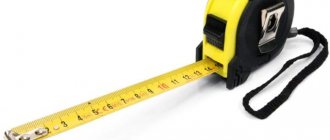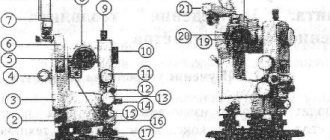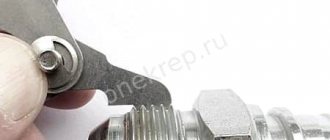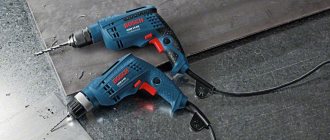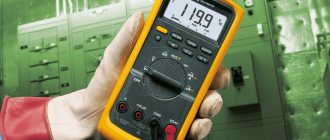Determining distances on the ground in various ways
Determining distances on the ground is carried out in a variety of ways. Some of them fall into the category of sniper or military reconnaissance methods. In particular, when navigating the area, an ordinary tourist may find the following useful:
This method is often used to draw maps of the area. Typically, steps are counted in pairs. A mark is made after each pair or three steps, after which the distance in meters is calculated. To do this, the number of pairs or triples of steps is multiplied by the length of one pair or triple.
All objects are visible from certain angles. Knowing this angle, you can measure the distance between the object and the observer. Considering that 1 cm from a distance of 57 cm is visible at an angle of 1 degree, we can take the thumbnail of the hand extended forward, equal to 1 cm (1 degree), as the standard for measuring this angle. The entire index finger is a 10 degree reference. Other standards are summarized in a table that will help you navigate the measurement. Knowing the angle, you can determine the length of the object: if it is covered by your thumbnail, then it is at an angle of 1 degree. Therefore, the distance from the observer to the object is approximately 60 m.
The difference between the flash of light and the sound is determined using a stopwatch. From this the distance is calculated. Typically, this is calculated by finding a firearm.
- By speedometer
- By time speed
- By match
Divisions equal to 1 mm are applied to the match. Holding it in your hand, you need to pull it forward, hold it horizontally, while closing one eye, then combine one end of it with the top of the object being identified. After this, you need to move your thumbnail to the base of the object and calculate the distance using the formula: the distance to the object, equal to its height, divided by the distance from the observer’s eyes to the match, equal to the marked number of divisions on the match.
Read also: Soft gingerbread cookies with white chocolate
Determining distance by finger
The method of determining the distance on the ground using the thumb helps to calculate the location of both a moving and a stationary object. To calculate, you need to stretch your hand forward and raise your thumb up. You need to close one eye, and if the target moves from left to right, the left eye closes and vice versa. At the moment when the target closes with your finger, you need to close the other eye, opening the one that was closed. In this case, the object will be moved back. Now you need to count the time (or steps, if the person is being observed) until the object is covered with your finger again. The distance to the target is calculated simply: the amount of time (or steps of the pedestrian) before closing the finger a second time, multiplied by 10. The resulting value is converted into meters.
Determining distance by eye
The eye distance recognition method is the simplest, but requires practice. This is the most common method because it does not require the use of any devices. There are several ways to visually determine the distance to a target: by segments of terrain, the degree of visibility of the object, as well as its approximate size, which appears to the eye. To train your eye, you need to practice by comparing the apparent distance to the target with double-checking on a map or steps (you can use a pedometer). With this method, it is important to fix in memory certain standards of distance measures (50,100,200,300 meters), which are then mentally laid down on the ground, and estimate the approximate distance, comparing the real value and the reference value. Consolidating specific distance segments in memory also requires practice: for this you need to remember the usual distance from one object to another. It should be taken into account that the size of the segment decreases with increasing distance to it.
Options for determining distances to objects
Among the useful skills that are recommended to be mastered by everyone who prefers an active holiday to a relaxing holiday is determining the distance on the ground. There are many situations when this skill can be useful - lack of cartographic material or its damage, loss, the need to determine the width of the river by eye, the distance to the target, calculate the height of a tree that needs to be used as a bridge, and more.
There is more than one way to determine distances on the ground
Existing options differ in different measurement errors and instrumentation. You can find out the distance:
- Using the “by eye” method. Suitable when there are signs of civilization in the area, at least communication poles.
- Using your own steps. This is a convenient way to calculate the length of a route. Since step length is a constant value, it is recommended to know and remember it in advance.
- By visibility of objects. Requires skill, gives the most accurate result in clear weather.
Electromagnetic and laser rangefinders
An electromagnetic distance meter belongs to the so-called pulse-type devices; the accuracy of their measurement is considered average and can have an error of 1.2 to 2 meters. But these devices have a great advantage over their optical counterparts, since they are optimally suited for determining the distance between moving objects. Their units of distance measurement can be calculated in both meters and kilometers, so they are often used when carrying out aerial photography.
As for the laser rangefinder, it is designed to measure not very large distances, has high accuracy and is very compact. This especially applies to modern portable laser roulettes. These devices measure the distance to objects at a distance of 20-30 meters and up to 200 meters, with an error of no more than 2-2.5 mm over the entire length.
Metal tape measure
Available in nominal distances up to 20 m with a catching mechanism at the free end. Used for simple measurements indoors and outdoors.
Advantages:
- Possibility of taking readings in any weather.
- Environmental Safety.
- Lack of batteries.
- Long service life.
- Minimum error.
Pocket Roulette
Flaws:
- Fixed maximum length.
- Inability to use in hard-to-reach places.
- Frequent contact with water may cause corrosion.
- Large dimensions.
What you need to know about rangefinders?
The presence of each additional function increases the cost of the rangefinder, and some of them are necessary in specific conditions:
• Bluetooth is a technology for wireless data transfer that allows you to transfer measurement results to a computer or smartphone without a direct connection.
• Flip-up type brackets – for taking measurements from inside corners.
• Ability to calculate volumes and areas. The function is useful, for example, when carrying out cosmetic repairs to premises.
Types and types of laser meters
The variety of applications for light rangefinders is extremely wide - from astronomical measurements to domestic needs. Of course, their designs are very different from each other depending on what tasks they are intended to perform. For obvious reasons, open sources provide scant information about the devices and types of modern military equipment. Civil devices can be divided into the following groups:
- sights for hunting weapons;
- surveillance devices;
- golf devices;
- geodetic instruments;
- specialized for forestry;
- laser roulettes.
Types of popular measuring instruments
- metal tape measure;
- laser tape measure;
- micrometer;
- level;
- calipers.
Professional metal tape measure
In construction stores you can find any construction tool you are interested in. Also, many companies offer rental services for such devices, which reduces construction and repair costs. In addition, this procedure eliminates the purchase of low-quality construction tools. You can also use several models and choose the best one to purchase for personal use.
Functional
Laser rangefinders of various price categories and functionality are available on the market. Simple devices perform the “required minimum” of functions - they measure the distance to an object. More complex models support a wide range of functions, each of which solves its own problems.
Trekking
Laser rangefinder in operation. Measuring the distance of a room.
Thanks to tracking, you can easily level the rangefinder without resorting to bubble levels.
Moreover, trekking is equally suitable for determining the perpendicular to an inclined surface, which is not the case with levels. Addition, subtraction, area, volume. Many tasks require not just measuring distances, but also performing some mathematical operations with the measurement results.
Determining distances “by eye” or by linear objects
The method of measuring distance by eye is suitable when there is an object with a known size (length, width or height). This calculation is considered 90% accurate, and sometimes more if you gain experience.
Linear dimensions of the most common objects:
- passenger car - L*W*H corresponds to 4m*1.5m*1.6m;
- adult – on average 1.7 m;
- human head – H*W corresponds to 0.25m*0.20m;
- communication pole (wooden) – 6 m;
- communication pole (concrete) – 8 m;
- distance between power line poles – 50 m;
- between high-voltage line poles – 100 m;
- village house - 7 m;
- one floor of an apartment building (panel) - 3 m.
LHow to determine the cardinal directions in nature, I tell you in the article: How to determine north and south without a compass, day and night
How to determine the distance to an object
Take a ruler and place it at the level of the object being measured, 50 cm from the eyes. The dimensions of an object (length, width or height) are measured using a ruler and counted in millimeters.
Determining distance using a ruler
Now use the formula:
Distance, m = (actual size in cm/measured size using a ruler in mm)*5.
This academic method has been slightly simplified in the tourist environment. Tourists use their thumb to determine distance.
Let's look at the example of measuring the distance to a communication pole (height 8 m). The length of the thumb is about 6 cm. Stretch your hand in front of you, clench your palm into a fist so that the thumb points up. The distance from the eyes to the finger will be about 60 cm. Determine what length the pillar corresponds to, for example, a third of the finger (2 cm).
Next, it remains to calculate the proportion:
X = (8 m * 60 cm)/2 cm = 240 m.
Laser-based devices
A qualitative breakthrough in the evolution of instruments for measuring length was the emergence of sources of electromagnetic radiation in the optical range. In the second half of the 20th century, the first working examples of quantum generators were created, and since then lasers have continued to be improved. based on them, there was no exception - the military were again in the vanguard. The first laser rangefinders were installed on tanks, used to target missiles, and were also used in space exploration.
Improvements in electronics and the emergence of digital computing methods have led to the creation of compact electronic meters for measuring length , both ultrasonic and laser. The world's first handheld laser device was produced by Leica in 1993.
Measuring distances on the ground remotely
If the measurement object is in the line of sight, but in the presence of an insurmountable obstacle that makes direct access to the object impossible (for example, lakes, rivers, swamps, gorges, etc.), distance measurement is used remotely by the visual method, or rather by methods, since there is There are several varieties of them:
- High precision measurements.
- Low precision or approximate measurements.
The first includes measurements using special instruments, such as optical rangefinders, electromagnetic or radio rangefinders, light or laser rangefinders, ultrasonic rangefinders. The second type of measurement includes a method called geometric eye measurement. This includes determining distances based on the angular size of objects, constructing equal right-angled triangles, and the method of direct notching in many other geometric ways. Let's look at some of the methods for high-precision and approximate measurements.
Calculating distance in steps
The ability to determine distances with your own steps can be useful both for lovers of tourism (for example, when drawing up maps of the area and vice versa, when searching for an object indicated on a map or plan), and for ordinary citizens who engage in, say, race walking.
Step length is a constant value
Steps are used as a measuring unit because a person usually takes steps of equal length when walking at a measured pace on a flat surface. It is this length of your step that is recommended to be calculated and remembered as a reference.
The change in reference length is affected by:
- human fatigue
- air temperature, in hot weather steps are shorter and movement speed is lower,
- cross-country movement,
- walking in a group, when we intuitively or intentionally adapt to the speed and pace of other people,
- heavy backpack.
“Wet feet” method There are several ways to determine step length.
- Method "Wet feet"
The point of this measurement is that you need to “mark” with wet feet, then take a tape measure and find out the distance from one heel to the other. For the purity of calculations, you should take several steps, measure the distances and calculate the average value.Any puddle is suitable for the method, if there is dry asphalt nearby, you can walk through snow, mud, sandy beach, specially wet your feet and walk on the floor at home. The main thing is that there are footprints left.
- Method of walking for a short distance Measure a distance of 10 meters on a flat surface with a tape measure. After that, walk and count the number of steps. Divide 10 meters into steps to get the length of one step. Then walk in the opposite direction and calculate your step length again. Calculate the average step value.
- By map For this method, a map, a diagram of the area with objects A and B, located in relative proximity to each other and the distance between which is easy to calculate, is suitable. Go from point A to point B and count your steps. Divide the distance by the resulting amount - you will find out the length of your own step. Instead of a paper map, you can use a navigator to plot a route between two points and then follow it.
- Based on height Knowing your height, you can also calculate your step length, but the calculation will be too average. To do this, height expressed in centimeters must be multiplied by 0.413 (for women) or 0.415 (for men).
Having a step length, you can now easily calculate distances on a hike or walk. It’s interesting that if you make this kind of counting a habit, you’ll soon notice that you’re counting your steps out of inertia. There are two ways to count steps.
- Make every step count.
- Count every step, i.e. only the right leg or only the left. This is a more convenient option for long journeys.
In order not to get lost when counting, when the number of steps exceeds 100, you can bend your finger for every hundred or transfer matches from one pocket to another.
Instruments for measuring exceedances
Such devices include optical. levels with a level and a self-aligning sighting line, electronic levels, badometric. levels, hydrostatic and hydrodynamic. levels, micro-levels, etc. Laser levels have been designed in which the sighting line is set by a beam of laser radiation, and “laser plane” type levels with automatic scanning the beam in a horizontal or vertical plane. In combination with electronic sensors on staffs or other sighting devices, these devices provide high geodetic efficiency. measurements.
Hydrostatic Levels of stationary and portable types are used when monitoring the position of technological equipment. equipment and building structures during the commissioning and operation of structures. Electronic (digital) levels are produced with code strips, which make it possible to minimize the subjective errors of the observer, accumulate the results of field measurements in the device’s memory and transfer them to a computer.
Instruments for measuring short distances
What tools are used to measure small distances, such as the diameter of wires, bolts, connecting parts, etc.? There is only one answer - highly accurate. These include calipers, bore gauges and micrometers. The desired object is placed between the bars or clamps of the measuring device, which correspond to the data on the scale. Built-in bayonets or rods are used to measure the depth of hollow objects. The accuracy of the readings is calculated to the tenth of a millimeter.
Calipers
Micrometer
GPS equipment
GPS modules or receivers accompany us in everyday life in our phones, navigators, tablets, etc.
They are designed to help us navigate the area and not get lost in the urban jungle. However, they have little in common with geodetic GPS equipment. Surveyors need these devices not for terrain orientation, but to accurately determine the location of the “dish” (usually the manufacturers of GPS receivers adhere to this form). The error is usually 0.5-2 centimeters relative to the nearest point of the State Geodetic Network (GGS). While conventional navigators give a location error of about 10-20 meters, which is unacceptable in the work of a surveyor. But there are many factors that very often negatively affect the magnitude of the error in geodetic measurements using GPS equipment. Therefore, it is not enough to simply purchase an expensive “dish” and start determining the location of neighboring fences, for example, like a regular navigator. Without proper calibration and subsequent processing of measurements, nothing will come of it.
In general, if you see a surveyor with a “dish” on a pole, know that he is determining the exact location of the point above which the receiver is located. Recently, the transfer of site boundaries to the terrain is carried out almost exclusively by the GPS method. It's much faster and more convenient.
Visibility of objects - as a way to find out distance
By the fact that objects are distinguishable whether they are far away with the eye or not, it is also possible to determine the distance quite accurately. With training, it is possible to reduce the error in determining the length to 10-20% per 1 km.
Determining distance by visible objects
Using this method, you need to take into account that the eye perceives distances differently:
- at night, the distance visually increases;
- in the presence of precipitation, the object will appear further away;
- an object on a plain appears closer than on a hilly area;
- water barriers greatly reduce distances;
- a dark object will appear further away than a light object.
The data below is designed to determine the distance to an object during the day in clear weather on flat terrain.
- If your eye could discern a village house in the distance, then the distance to it is no more than 5 km. Are you able to see the pipe on the roof? It's already 3 km.
- If it is possible to see the movement of a person’s legs (walking or running) – up to 700 m.
- Tree trunks and communication line poles can be recognized from a distance of no more than 1 km.
- The face is visible from a distance of up to 100 m.
LHow to determine the weather in hiking conditions, you will learn from the article: Ways to find out the weather by signs for tomorrow
Rangefinder verification
According to the regulatory framework, the frequency of verification of laser rangefinders is once a year.
In this case, the parameter is sometimes set for a specific model by the manufacturer itself.
Verification is also performed in the following cases:
- If the device is new and will be used in the future for its intended purpose.
- When specialized work of various types is expected to be carried out.
- If the transportation or storage conditions were incorrect, which led to suspicion of defects.
- As prescribed by government agencies.
- At the owner's own request.
After completing this procedure, a corresponding document for the device is issued, indicating all the necessary parameters.
How and where to do the verification?
The rangefinder is checked in the following order:
- External inspection to find noticeable defects.
- Operational testing – the operating efficiency of individual components is assessed. High precision control devices are used.
- Primary check - the working wavelength of the laser, its power, and beam diameter are determined.
Verifications are carried out by specialists from metrology companies that have the appropriate certificate.
Laser rangefinders
A very accurate distance measuring tool. Laser-type rangefinders work on the same principle as echolocators, only it is not the sound that is examined, but the reflected laser beam. Pulse-type devices calculate the distance from the delay of the reflected beam, and phase devices calculate the distance from the change in the phase of oscillations. The former are very convenient for measuring relatively small distances with high accuracy, for example, within a room or building. They are also called “laser roulettes”. Phase laser devices are used to measure distance to distant objects.
A laser rangefinder consists of several main parts:
- emitter;
- reflected beam receiver;
- computing module;
- display;
- power supply;
- control panel on the front panel.
Typically, all components of a laser rangefinder are assembled in a compact, durable case made of waterproof, shockproof plastic with anti-slip pads. The degree of protection of the housing is not lower than IP 64. Household rangefinders, which are called laser rulers or tape measures, may have lower protective properties, but buying a rangefinder with protection lower than IP 54 is not recommended.
The optical and electronic parts of the rangefinder are very sensitive to dust and moisture, and the device must be used at a construction site or mining site, where excess concentrations of dust and humidity are quite possible. Rangefinders are also often used on hiking trips in the forests and mountains, and when photographing landscapes. Here, too, uncomfortable conditions are quite real. Laser rangefinders are quite expensive measurement tools designed to last for many years. It is better to choose a device with reliable protection from external conditions.
Laser rangefinders work great when the object has a direct line of sight, especially on a cloudy day or at night. In bright sunshine, the sensitivity of the device may decrease slightly. These are very sensitive meters with which you can determine ranges from several meters to several kilometers. But they require precise targeting. If you are going to work at long distances, then you need to choose a rangefinder that has tripod mounts on the body. If there is no tripod, then holding the device in your hands, it is quite difficult to “catch” the reflected beam.
Laser roulette
What tools should you use to measure long distances in hard-to-reach places? Conventional equipment has been replaced by laser tape measures, which can measure long distances. This is a highly technical device that quickly and accurately takes readings of any level of complexity.
Standard laser rangefinder
Each device is equipped with a high-quality display that displays readings and settings. The operation is based on the principle of reading the period of time during which the laser beam reaches the end point.
Widely used in all types of construction work - finishing, reconstruction, construction of walls and structures. By placing the device at the starting point and pressing start, the measurement result will be displayed in a matter of seconds.
Advantages of the device:
- Measurement in impassable terrain.
- Taking readings alone.
- High measurement accuracy.
- Work in difficult weather conditions.
- Storing multiple readings.
- Built-in calculator.
- Ability to take readings without touching surfaces.
- Converting data into various systems.
- Height measurement function.
Flaws:
- Price. Almost all models have a high price.
- The need to use a tripod for taking readings at long distances.
- Large error when measuring small lengths.
- In cold weather, the battery may drain quickly.
Advanced model
Recommendations
To improve the accuracy of the readings, a target is installed at the end point. Save measurement results in memory to select the best repair option.
Cheap Chinese analogues give a large error over the entire measurement range. It is not recommended to use such tape measures to take control and critical numbers.
Related article:
Laser level self-leveling 360 degrees. Practical advice on choosing a quality device in a separate publication on our portal.
Measuring tapes and roulettes
To perform linear measurements, as well as for angular ones, regulatory documents for various types of surveys or work provide for certain requirements. These requirements are always the measured accuracy of the instruments and the relative measurement errors. Depending on them, tools for measuring line lengths are selected.
Measuring tapes and tape measures are used for direct measurement of distances. Tape measures come in different lengths (3, 5, 10, 30, 50 meters) and are made of different materials:
- braid;
- carbon steel;
- of stainless steel;
- fiberglass;
- steel with nylon coating.
Tape tapes are used for low-precision measurements to measure the volume of work performed using tape measurements of underground communications, open-pit and underground mine workings, and their sections. This tape measure consists of a measuring fabric tape with impregnation and metal threads woven into it. It is manufactured in a plastic case with a tape wound around the axle.
Metal tape measures, with stainless steel or steel frames with a polymer coating, are used for direct distance measurements. When used professionally, they must be compared, that is, comparable with an official standard of a certain length using a comparator. After passing this verification, a passport is drawn up for each tape measure, which indicates the true values of the segments and lengths of the tape measure, as well as corrections that must be introduced into the results of length measurements. According to state standards, the deviation when taking readings in steel tapes should be no more than 2 mm and the accuracy in measurements with them has a relative error ranging from one two thousandth (1/2000) to one ten thousandth (1/10000) of the corresponding length values. In combination with tape measures, special devices are used during the measuring process - spring dynamometers. They allow you to take readings on the roulette scale each time with the same tension, equal to a force of about ten kilograms.
Measuring tapes are probably used very rarely in practice nowadays. They come with scales at the ends of the tape and without them, and are marked LShZ (scale tape measuring land), and LZ (land tape). Their kit includes:
- the actual tape itself, wound on a steel ring and with handles along the edges, the length of the tapes can be different, 20, 24 and 50 meters;
- and sets of six or eleven pieces of studs, which are metal rods (300-400 mm long, 5-6 mm in diameter) with a ring bent on one side with a diameter of 70-80 mm.
Pipe cable detector
A device accompanying engineering and geodetic surveys for plotting underground communications on the plan. Often the kit includes a generator that is installed on the communication in its visible part. It generates vibrations that are detected by the receiver. After identifying the turning points of communications, they are applied to the geobase or topographic plan. The cable detector can also measure the depth of communications with an accuracy of 0.01 m.
check
We told you briefly about geodetic instruments and tools needed in applied geodesy. We hope that we have helped you understand the intricacies of tripods and “sticks” with which people who call themselves surveyors work.
Get acquainted with the cost of our work
